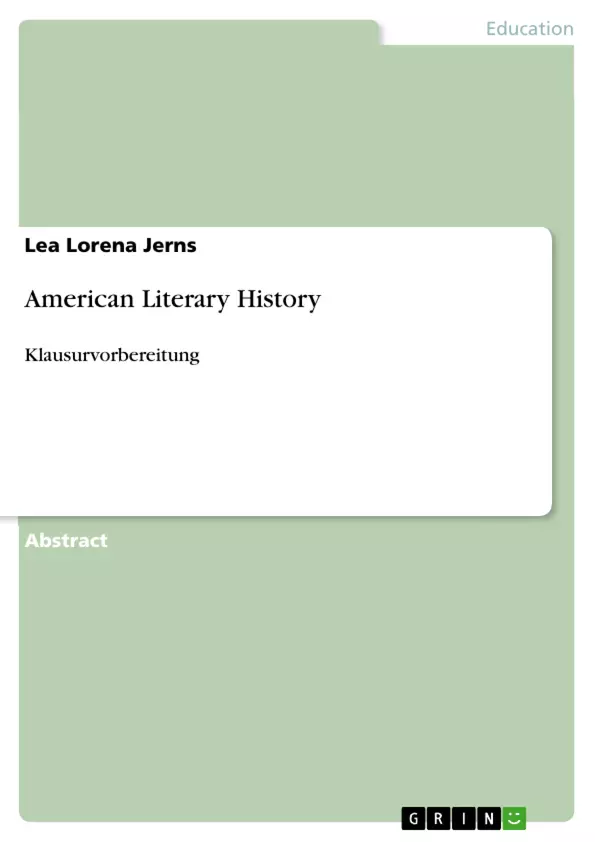Three Phases of Literary Modernism, Modernism and the Victorians/ Transatlantic Modernism, High Phase of Literary Modernism – The Jazz Age (1920s), Literary Modernism, Langston Hughes (1902-1967) – high modernism, poems 1920s, Modern US-American Drama, Eugene O’Neill (1888-1963) modern U.S. Am. Drama (high modernism), The Gender of Modernism, Gertrude Stein (1874-1946), Political Advocacy in the 1930s, Zora Neale Hurston (1891-1960), New Criticism, Jewish American Literature, America in the 1950s, Allen Ginsberg (1926-1997), POSTMODERNISM, Thomas Pynchon (*1937), Effects of Feminism and Multiculturalism on US Am. Literature, Gloria Anzaldúa (1942-2004), Louise Erdrich (*1954), Feminism and US-Am. Literature in the late 20th century, Development of Literary Theory, Toni Morrison (*1931), Tony Kushner (*1956), Neo-Realism, South-Asian American writers, Jhumpa Lahiri (*1967), Jonathan Safran Foer (*1977)
- Quote paper
- Lea Lorena Jerns (Author), 2013, American Literary History, Munich, GRIN Verlag, https://www.grin.com/document/277887



